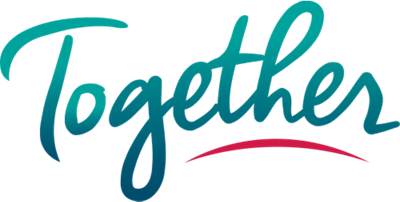As a young adult, you are on an important journey to build your identity. This journey includes determining your sexual orientation, gender identity, and gender expression.
These issues are very personal. During cancer, sickle cell disease, or other serious illness, the discovery process can be more complex.
Understanding LGBTQ+ terms and definitions
LGBT stands for lesbian, gay, bisexual, and transgender. LGBTQ+ expands the community to include those who identify as queer or are questioning their sexual orientation or gender identity.
- Lesbian: Refers to a person’s sexual orientation, specifically females with sexual attraction and/or romantic behavior focused on other females.
- Gay: Refers to a person whose sexual attraction and/or romantic behavior focuses on members of the same sex or gender identity. A personal or social identity may be based on a person’s same-sex attraction and membership in a sexual minority community.
- Bisexual: Refers to a person whose sexual and/or romantic attractions and behaviors engage with both sexes.
- Transgender: Refers to people whose gender identity or gender expression differs either from their birth sex or from current ideas of masculinity and femininity.
- Queer: Refers to an inclusive and self-affirming umbrella term for people who have a non-heterosexual sexuality or gender identity. However, this term remains offensive to some people.
- Questioning: Refers to individuals who are exploring their gender, sexual identity, and/or sexual orientation. People who are questioning may be unsure, still exploring, and concerned about applying a social label to themselves for various reasons.
- +: The plus sign symbolizes the other identities included under the LGBTQ+ umbrella, such as asexual and intersex. As the LGBTQ+ community expands, so do the ways to identify its members.
The LGBTQ community and health care
Health care is becoming increasingly sensitive to the challenges faced by the LGBTQ+ community. Several trusted medical associations have issued important guidance to care providers and hospitals as more people become aware of LGBTQ+ issues.
In the early 1980s, the American Academy of Pediatrics (AAP) issued its first guidance on treating sexual minorities. It has revised and updated its guidance to care providers every decade since. Today, the AAP urges pediatricians and specialists caring for children and youth to:
- Create doctor’s offices that are friendly to sexual minority youth.
- Use non-biased language and create a safe environment for LGBTQ+ patients.
- Encourage respectful, open communication between care providers and patients. This increases the likelihood that patients will share important physical, sexual, and mental health information and history throughout their illness journey and improves the quality of care.
- Address the full range of health conditions and needs experienced by LGBTQ+ children and youth.
The Joint Commission, a health care accreditation organization in the United States, has also issued guidance urging hospitals to create more welcoming, patient-centered environments for LGBTQ+ patients. Specifically, this guidance urges care providers to deliver the same patient-centered care to LGBTQ+ patients that is the gold standard for the treatment of all patients. This includes care delivered with compassion, empathy, and responsiveness to the needs, values, and expressed preferences of each patient.
In response to this guidance and growing public discourse on LGBTQ+ rights and concerns, many hospitals have established policies on caring for LGBTQ+ patients. Many facilities also provide training for staff on LGBTQ+ patient needs and rights. Families and survivors should ask about these policies as they examine their options for treatment facilities.
Choosing a treatment center for LGBTQ+ patients during a pediatric serious illness
When you are going through serious illness, you will decide where to seek care based on a combination of factors, including access to specialists and how close the care is to home. You may also wish to weigh a facility’s sensitivity to and awareness of issues related to sexual and gender identity.
In deciding which treatment facilities may best fit the needs of a LGBTQ+ patient, some questions you can ask include:
- Hospital policy: Does the hospital have a formal LGBTQ+ policy? If so, ask to see a copy of the policy.
- Training: Has the hospital trained staff on LGBTQ+ issues? And if so, has it done a “grand rounds” training on LGBTQ+ issues? During grand rounds, doctors and other health care providers are presented with a patient case facing specific medical problems and treatment options. The case provides doctors with the opportunity to learn new skills to communicate with and address the full needs of patients.
- Expertise: Are there staff (e.g., social workers, psychologists, physicians) who have expertise in LGBTQ+ issues who can provide consultation and education to families and other staff members as needed?
- Specialists: Does the hospital have LGBTQ+ specialists and, if so, what positions do they hold (e.g., oncologist, social worker, nurse practitioner)? If not, are they willing to have a local endocrinologist experienced with transgender youth consult with the hospital oncologist?
- Preferred name: If a patient is transgender, can the patient give a preferred name when they register? Will key staff ask about a preferred name? Having options can be important. Many transgender youths will want to gradually offer a preferred name as they develop trust with staff.
Finding support among the care team
Like pediatric illness itself, the process of coming out as LGBTQ+ to your family, friends, and peers is a journey. You may be at any point along the process. Building a trusted relationship with at least one member of the care team with whom you or your family can discuss issues about identity is important.
Psychologists and social workers are trained on acceptance and have specific professional values and codes of ethics that are LGBTQ+ affirming. But you may build a trusting relationship with a different member of the care team, such as an oncologist or nurse. The important thing is that you find someone you can trust.
Some of the important topics you may discuss with a trusted member of your care team include:
- Emotional health: What issues are you struggling with emotionally? The care team treats you as a whole and will work to get the right support and resources based on your specific situation. They can also support your family.
- Sexual activity and exposure to sexually transmitted infections (STIs): Sharing personal details of medical and sexual history that could compromise the immune system is critical to successful treatment.
- Hormone therapy: If you are already going through hormone therapy to move toward sexual reassignment, it is critical to alert your care team early on. This way, they can make a personal care plan for you. Hormones may impact treatment.
Understanding privacy rights and limitations
You should confirm which information that you share with a trusted member of the care team can remain private. If you have not come out as LGBTQ+ to your parents, be aware that information captured on your medical chart may be seen by a parent or caregiver.
Care team members want you to trust them and talk about important issues. At the same time, care team members have ethical and professional guidelines that dictate what they capture on the medial record. If you wish for information to remain confidential, you must request a private conversation. Any information you wish to keep private must not be recorded in the medical chart.
You should ask the following questions:
- Will my gender orientation or identity information be included in the medical health record?
- How will gender orientation or identity information be used?
- Under what circumstances will my gender orientation or identity information be revealed?
- Which care providers will see this information?
- Will caregivers see this information?
- Will insurance or health care coverage companies have access to this information? Could this information be used to facilitate discrimination?
LGBTQ+ during survivorship
Most LGBTQ+ youth who survive a chronic illness such as cancer are resilient and emerge into adulthood as strong people. However, there are issues specific to the LGBTQ+ community that pediatric illness survivors should keep in mind during adulthood:
- Finding trusted providers: LGBTQ+ adults often face disparities in health care that can impact both the level of care and outcomes. Members of the LGBTQ+ community should maintain close links to providers they know and trust throughout adulthood.
- Understanding risks for transgender survivors: Transgender survivors who have had sex reassignment surgery may face cancer risk to residual tissue that remains after surgery. For example, trans men may have a risk of breast or cervical cancer. Survivors should work with their care provider to ensure appropriate cancer screening plans that address the issue of residual tissue. They should discuss the potential impact of specific drugs such as estrogen, progestin, and testosterone taken during or after transition.
- Avoiding cancer-causing behavior: The LGBTQ+ community has a higher percentage of cancer than the general population. Members of the LGBTQ+ community are more likely to drink alcohol and smoke, both of which increase the risk for cancer. Survivors should avoid these behaviors and seek support if necessary.
Resources for LGBTQ youth, parents and survivors
In addition to seeking help and support from the patient care team, patients and families may find supportive resources online through the following sites:
Many communities also have local organizations that focus on and support the LGBTQ+ community that can be found searching online.



